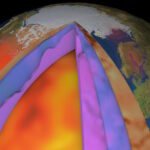Everyone with an expectation to know about the evaluation of the universe, earth, and life can focus on the latest research of geoscientists. Well-experienced and dedicated geoscientists worldwide research and reveal the geological information that spans over 4.5 billion years of the history of the earth. It is a suitable time to concentrate on the deep-time history of the earth and make an informed decision about how geoscientists decipher different mechanisms and rates of evolution of the earth. You must know and double-check the mechanisms of climate change, envision the future of the earth, and locate the natural resources.

The most important aspects of Deep-time Analytics
All beginners to the deep-time digital earth program can get complete guidance from the data-driven discovery in geosciences. They can study the history of Earth using inductive reasoning and deductive reasoning. Abduction is successfully derived from the accumulation and complete analysis of large amounts of data. It is independent of a premise or generalization. It has the potential to generate transformative discoveries in science. You can consider everything about how deep-time analytics transforms our understanding of earth’s past and make an informed decision about how to enhance your research process.
There are three important issues to be resolved for facilitating abductive discovery using deep-time databases. Relevant geodata resources are incompatible with the Findable, Accessible, Interoperable, and Reusable principles for efficient scientific data management and stewardship. The overall terminologies and concepts used in databases are not properly defined. The same terms have different meanings across several databases associated with the earth-related research processes. It is too difficult to achieve data reusability and interoperability as no standard definitions of concepts and terminologies. Databases are heterogeneous in terms of coverage of geological themes, spatial and temporal resolution, geographic regions, and limitations of data availability, languages, metadata, and formats.

Understand the layers of the Earth’s history
Are you eager for navigating earth’s evolutionary story through deep-time analytics in detail? You must know and remember that it is too difficult to explore the whole picture of the evolution of the earth from separated thematic views. Artificial intelligence and big data create chances to resolve these things. Specialists in the deep-time digital earth program reveal significant aspects of the deep-time analytics and the layers of earth’s history to guide everyone to know about this big science program. They use the open platform to link available deep-time earth data and include the geological data used to interrogate by specifying the subject, space, and time. You can focus on the basic definitions and associations among concepts available in deep-time earth by using the deep-time earth knowledge system.










